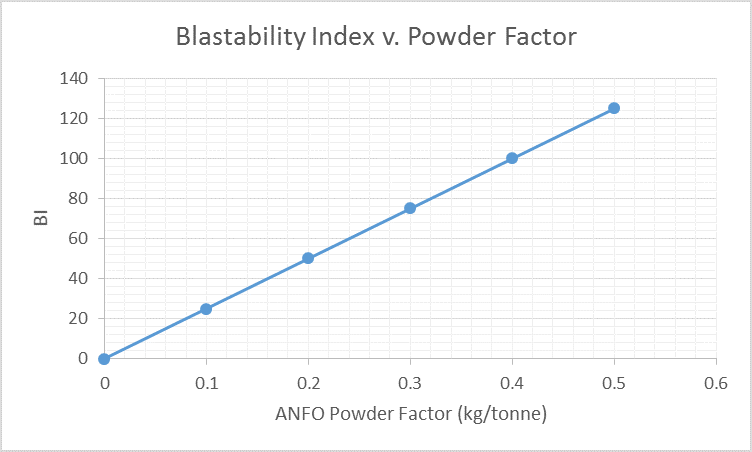Powder Factor is defined as the amount
of explosive required to dislodge and fragment 1 cubic
yard of rock. [3] The softer (less dense) the
material that is being blasted; the smaller the powder
factor.
Blastability Index (BI) is a variable calculated from
the rock mass description (RMD), location of any
cracks or weaknesses (referred to as joint plane
spacing (JPS) and joint plane orientation (JPO)),
specific gravity (SP), and hardness (H) of the
material to be blasted.
For a certain material, we can give it a rating of
10-50 in each of the categories RMD, JPS, JPO, SP, and
a rating of 1-10 for H. We divide the sum of the
ratings by 2, and we have our BI.
After calculating the BI for a blasting area, we can
determine the needed powder factor from an empirical
chart. [4]
Example:
For a blasting area composed
of soft shale,
we might have:
RMD = 10
JPS = 10
JPO =10
SG =10
H = 2__
42
|
 |
Our sum is 42
For the BI, we divide 42/2 and get 21
|
Referring to the empirical
chart, with a BI of 21, our
Powder factor will be approximately 0.88
|
